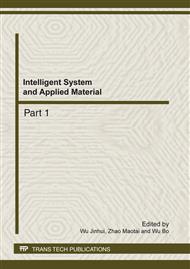p.1315
p.1320
p.1325
p.1329
p.1334
p.1339
p.1344
p.1349
p.1353
Design and Implementation of a Rocket Launcher with Improved High Speed & Accuracy
Abstract:
Aiming at high speed and accuracy position control, this paper introduces design of an optimal internal mode control and sliding mode control for rocket launcher servo systems which have large varied moment of inertia, strong impact moment and load moment. Internal mode control designed by LQR theory can satisfy system requirement of the position loop in PMSM system. Sliding mode control can restrain effects that caused by model parameter perturbation and external disturbance and realize high performance position control. Simulation results show that the control method is simple and has better performances compared with PID controller.
Info:
Periodical:
Pages:
1334-1338
Citation:
Online since:
February 2012
Authors:
Price:
Сopyright:
© 2012 Trans Tech Publications Ltd. All Rights Reserved
Share:
Citation:


